Let's talk British Shorthairs
How do you not fall for a British Shorthair? Their plump face and soft-as-silk fur draw you in but it’s their proper demeanor that keeps you coming back for more. A barely audible meow yet huge purr marks this sweet breed, who do like to cuddle but on their own time. Otherwise, the British Shorthair cat remains a steadfast observer and quiet comrade.
Official name: British Shorthair
Other names: British Blue, Shorthair
Origins: Great Britain
Hair length
2 out of 5Shedding Level
1 out of 5Grooming needs
2 out of 5Energy level
2 out of 5Vocal
3 out of 5Family pet
4 out of 5Compatibility with other pets
4 out of 5Can stay alone
3 out of 5Environment indoor or outdoor
2 out of 5
| Male | Female |
|---|---|
| Height | Height |
| 0 - 0 cm | 0 - 0 cm |
| Weight | Weight |
| 6 - 9 kg | 4 - 6 kg |
| Life Stage | |
|---|---|
| Kitten | Adult |
| 4 to 12 months | 1 to 7 years |
| Mature | Senior |
| 7 to 12 years | From 12 years |
Hair length
2 out of 5Shedding Level
1 out of 5Grooming needs
2 out of 5Energy level
2 out of 5Vocal
3 out of 5Family pet
4 out of 5Compatibility with other pets
4 out of 5Can stay alone
3 out of 5Environment indoor or outdoor
2 out of 5
| Male | Female |
|---|---|
| Height | Height |
| 0 - 0 cm | 0 - 0 cm |
| Weight | Weight |
| 6 - 9 kg | 4 - 6 kg |
| Life Stage | |
|---|---|
| Kitten | Adult |
| 4 to 12 months | 1 to 7 years |
| Mature | Senior |
| 7 to 12 years | From 12 years |

Get to know the British Shorthair
All you need to know about the breed
The British Shorthair is a great all-around feline and a wonderful choice for first-time cat owners. Their incredibly soft coat is the first of many appealing traits (and never mind that it comes in 100 different patterns and colour combinations!), followed by their large round eyes, captivating to say the least.
An independent spirit, the British Shorthair cat is calm and reserved - how typically British of them! Upstanding in every way, the breed is very loyal to their owners and warmhearted, despite a somewhat independent streak. The British Shorthair cat is even adorably clumsy at times - let’s just say they won’t be winning any awards for agility any time soon. It’s aspects like these though that make her all the more endearing. The breed doesn’t reach physical maturity until they are at least three - if not five - years old.
One could describe the British Shorthair as more soft and squishy than lean and mean, but no matter: The British Shorthair has a personality that can be comical at times - imagine that, for a cat! The kitten energy of year one will die down into year two, and adult males are typically more active than their counterparts, but all around, this is a sensational pet to have at any stage, of their life, or yours.
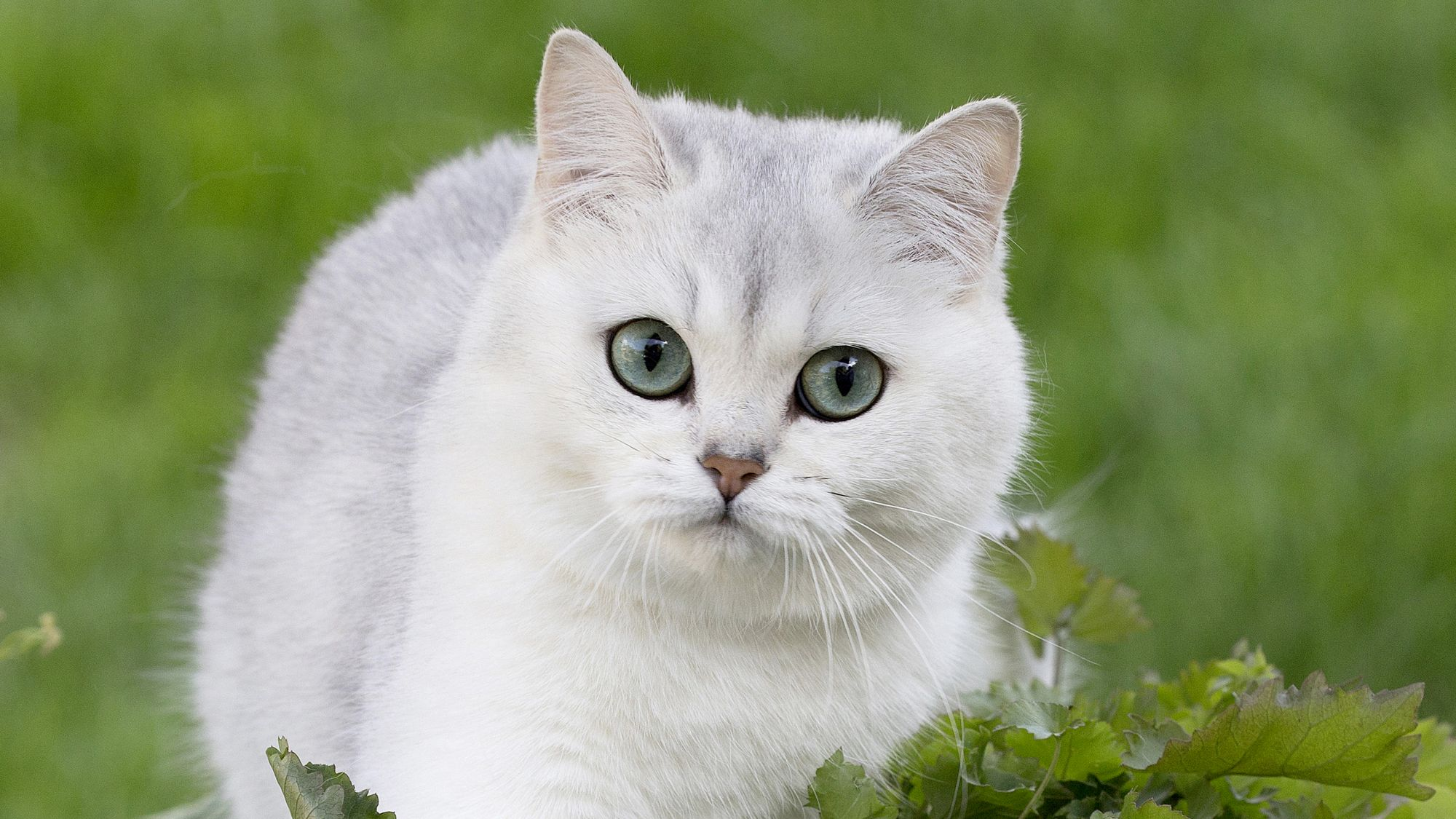
Two facts about British Shorthair
1. Don’t confuse the blues
The beautiful blue-grey colour of the British Shorthair is known far and wide as a hallmark of the breed, but they often get mistaken for the very popular Russian Blue, Chartreux, or the softer hued Burmese. The British Shorthair breed however comes in nearly 100 other colours and patterns, including deep red, chinchilla silver, and pure white.
2. Thick outerwear is so in
The dense coat of the British Shorthair gives it a distinctive plush look but exists in multitudes: The loose fur of the British Shorthair breed spans more fur per square inch than any other breed. The cat may overheat as a result of their thickness, so as a result is not a huge cuddler.
History of the breed
Despite their British origins, the British Shorthair can trace their roots to Ancient Rome, a cross initially of a domestic breed and wild cats. They are thought to be the oldest breed hailing from Europe although they were not formally recognized as a show breed by the Cat Fanciers’ Association until 1980. Originally prized for their expert ability to catch mice, that role has now taken a back seat to their current one as keeper of domestic bliss.
For most, the breed is a very familiar face, used by Lewis Carroll as the model for his legendary Cheshire Cat in Alice in Wonderland and for the bold cat in the childhood fairytale Puss in Boots.
Europe’s first well-documented formal show happened in London in 1871 at Crystal Palace. Best in Show was taken by a British Shorthair cat, at the ripe old age of 14!
From head to tail
Physical characteristics of British Shorthair
1.Ears
2.Head
3.Body
4.Tail
5.Coat
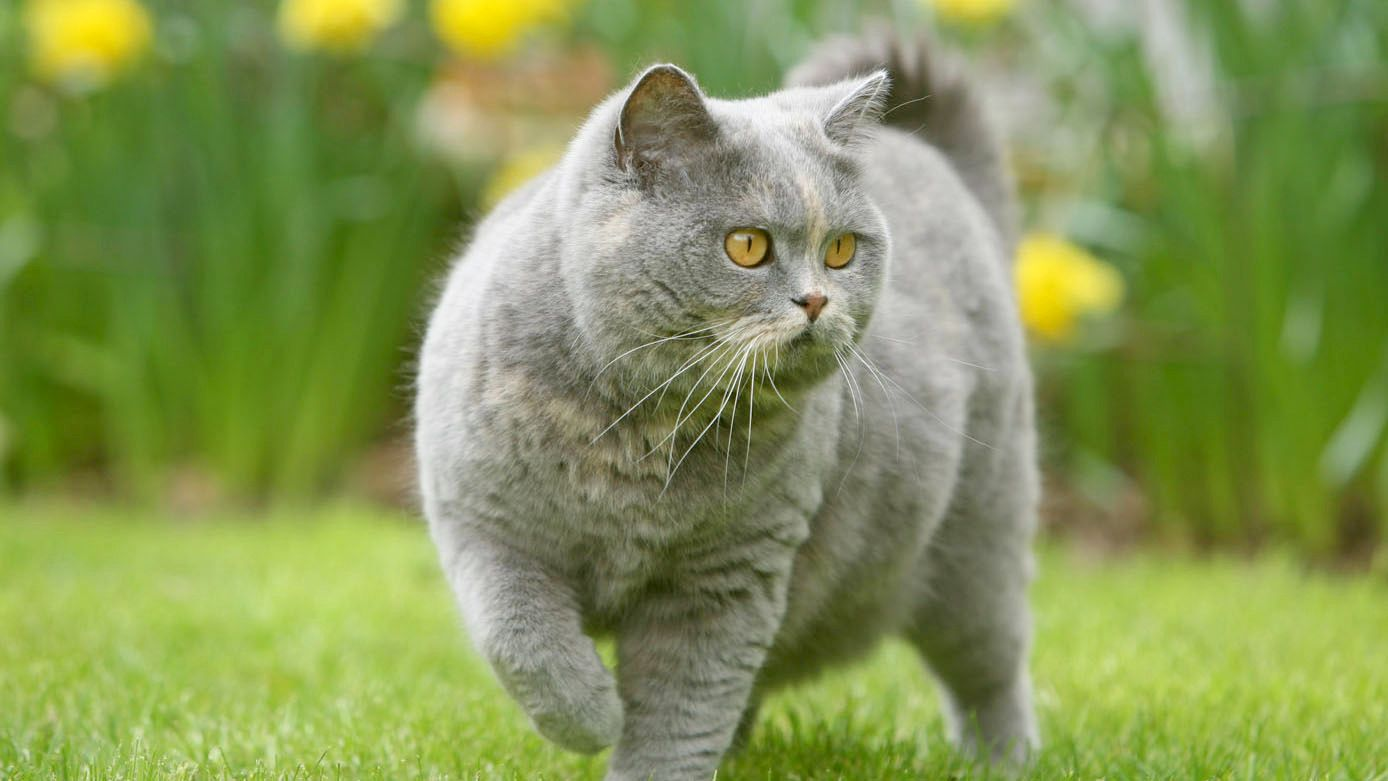
Things to look out for
From specific breed traits to a general health overview, here are some interesting facts about your British Shorthair
Look out for gum disease.
The breed has a tendency towards gingivitis, a common irritation of the gums at the base of the teeth. Thankfully, this very mild form of gum disease isn’t a reason to run to the vet but will, as with any medical condition, need to be watched and cared for. Brushing your British Shorthair’s teeth at least weekly will help prevent the build-up of tartar on both teeth and gums; daily brushing is optimal although difficult when it comes to feline cooperation...
Better left indoors
Due to their very gentle nature, the British Shorthair is probably best as an indoor cat for the most part, to guard the breed from predators – which includes more wild animals like fox and raccoons but also domesticated ones like neighbouring dogs who may have a high prey drive. Keeping your cat indoors will also help them avoid diseases they can readily catch outside, like Lyme disease or common parasites.
Not exactly athletic….
Sweet and docile as the British Shorthair is, they won’t be winning an agility contest any time soon. The breed can easily gain weight given their propensity to sit back and take in the world, more of a “meh…” than “meow” approach to life. It’s something we appreciate as their owner but need to be wary of when it comes to guarding their health. Play regularly with your cat to keep her fit, and let her wander around the house and in the garden while observed. Keeping treats to a minimum and small, measured meals is best to keep that body as trim as possible.
Healthy diet, healthier cat
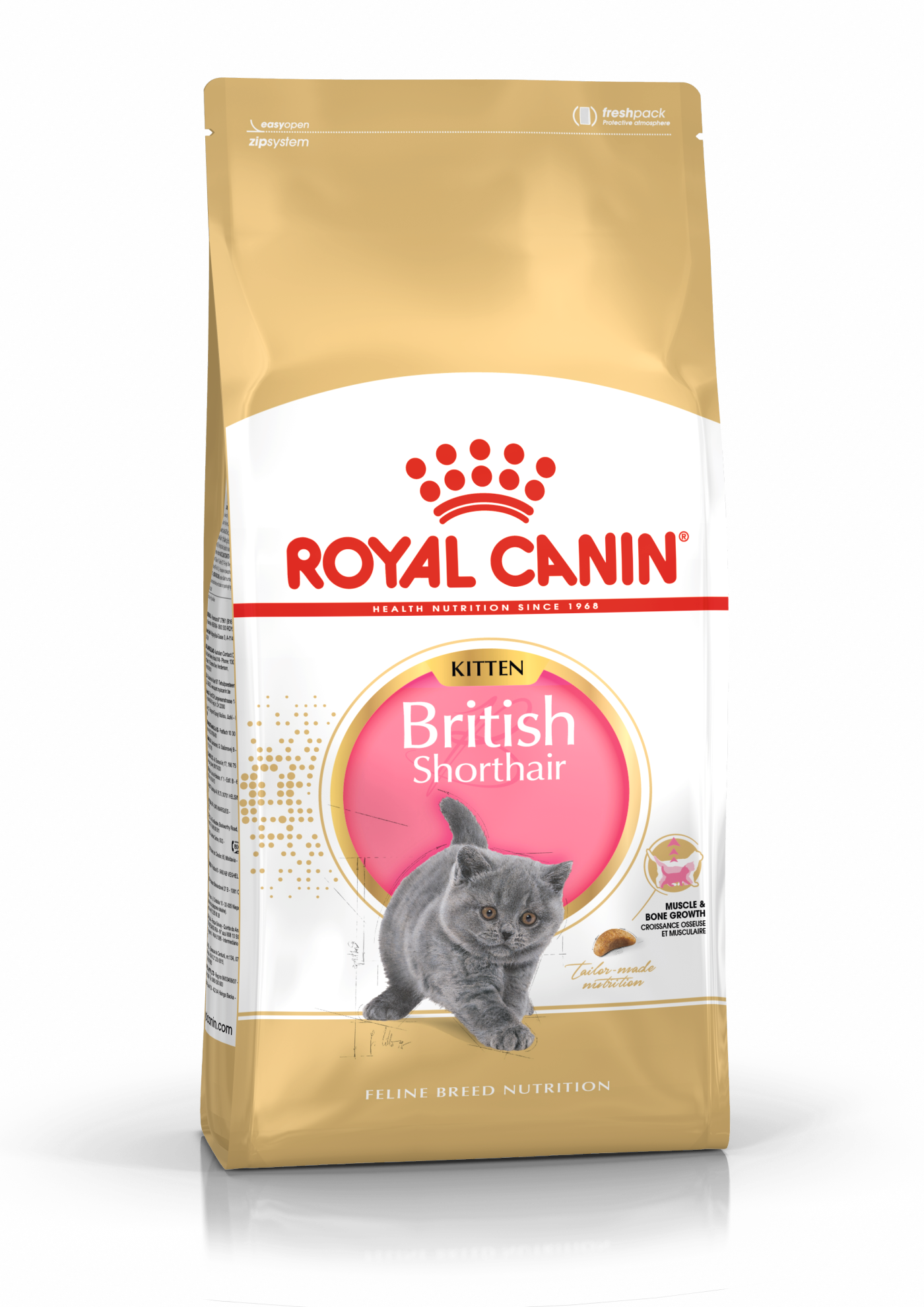
Tailored health nutrition has a fundamental role to play in maintaining the health and beauty of British Shorthair cats. Food provides energy to help with vital functions and a complete nutritional formula for British Shorthairs should contain an adapted balance of nutrients. Feeding them in this way will offer a diet that’s neither deficient nor excessive, both of which could have adverse effects on your cat’s health. Clean, fresh water should be available at all times to support good urinary regularity. Cats are also naturally adapted to eating small servings – between 7 and 10 times a day. Giving the recommended daily ration of kibble once a day will let your British Shorthair regulate their own consumption. Given the British Shorthair’s placid nature and a tendency to gain weight easily, both a specific diet and the right sized daily portion are essential from a very young age. The following recommendations are for healthy animals. If your cat has health problems, please consult your veterinarian who will prescribe an exclusively veterinary diet.
Growth is an essential stage in a kitten’s life. It is a time of big changes, discoveries and new encounters. A British Shorthair kitten’s requirements, in terms of energy, protein, minerals and vitamins, are much greater than those of an adult cat. They need energy and nutrients to maintain their body, as well as to grow and build new cells. A kitten’s growth comes in two phases:
Construction
From birth to 4 months
Weaning is the transition a kitten makes from liquid – or maternal milk – to solid food. This period naturally corresponds to the time when they cut their milk teeth, at 3 to 6 weeks old. At this stage, kittens are not yet able to crunch, so a soft meal (rehydrated kibble or an adapted wet food) helps facilitate the transition between liquids and solids. Until they’re 12 months old, a British Shorthair kitten’s immune system is still gradually developing. A complex of antioxidants, including vitamin E, can help to support their natural defences during this time of big changes, discoveries and new encounters. The digestive system matures progressively, with digestive aptitudes reaching full maturity towards 12 months of age. A cat is then able to consume adult food.
The natural immunity a kitten receives from the mother’s colostrum – or first milk – decreases while the kitten’s immune system gradually develops. This critical time, called the immunity gap, requires a complex of antioxidants, including vitamin E, to help support their natural defences. Kittens go through an intense and particularly delicate period of growth during which they’re prone to digestive upset. Their diet at this time should not only be rich in energy to meet their essential growth needs but should also contain highly digestible protein to cater to their digestive system that’s still maturing. Prebiotics, such as fructo-oligosaccharides, can also support their digestive health by helping to balance intestinal flora. The result? Good stool quality, all around. The kitten’s food should contain omega-3 fatty acids – EPA-DHA – which helps support the proper neuro-cerebral development.
Consolidation and Harmonisation: from 4 months to 12 months
From the fourth month, a kitten’s growth slows down. A food with an adjusted protein content and precisely balanced vitamins and minerals will help support the development of healthy muscles and bones for a healthy growth. The addition of L-carnitine, which is involved in healthy fat metabolism, can also be beneficial. The British Shorthair kitten’s energy requirement during this period remains high. A food lower in fats is recommended. This is particularly important after a cat is sterilised. Between 4 and 7 months, a kitten’s milk teeth fall out and are replaced by permanent ones. When the adult teeth have come through, a kitten needs to eat a specially designed moon-shaped kibble that’s big enough with a texture that makes it easy for the British Shorthair kitten to grasp. The unique kibble encourages chewing to help support oral hygiene. Until they’re 12 months old, a British Shorthair kitten’s immune system is still gradually developing. A complex of antioxidants, including vitamin E, can help to support their natural defences during this time of big changes, discoveries and new encounters. The digestive system matures progressively, with digestive aptitudes reaching full maturity towards 12 months of age. A cat is then able to consume adult food.
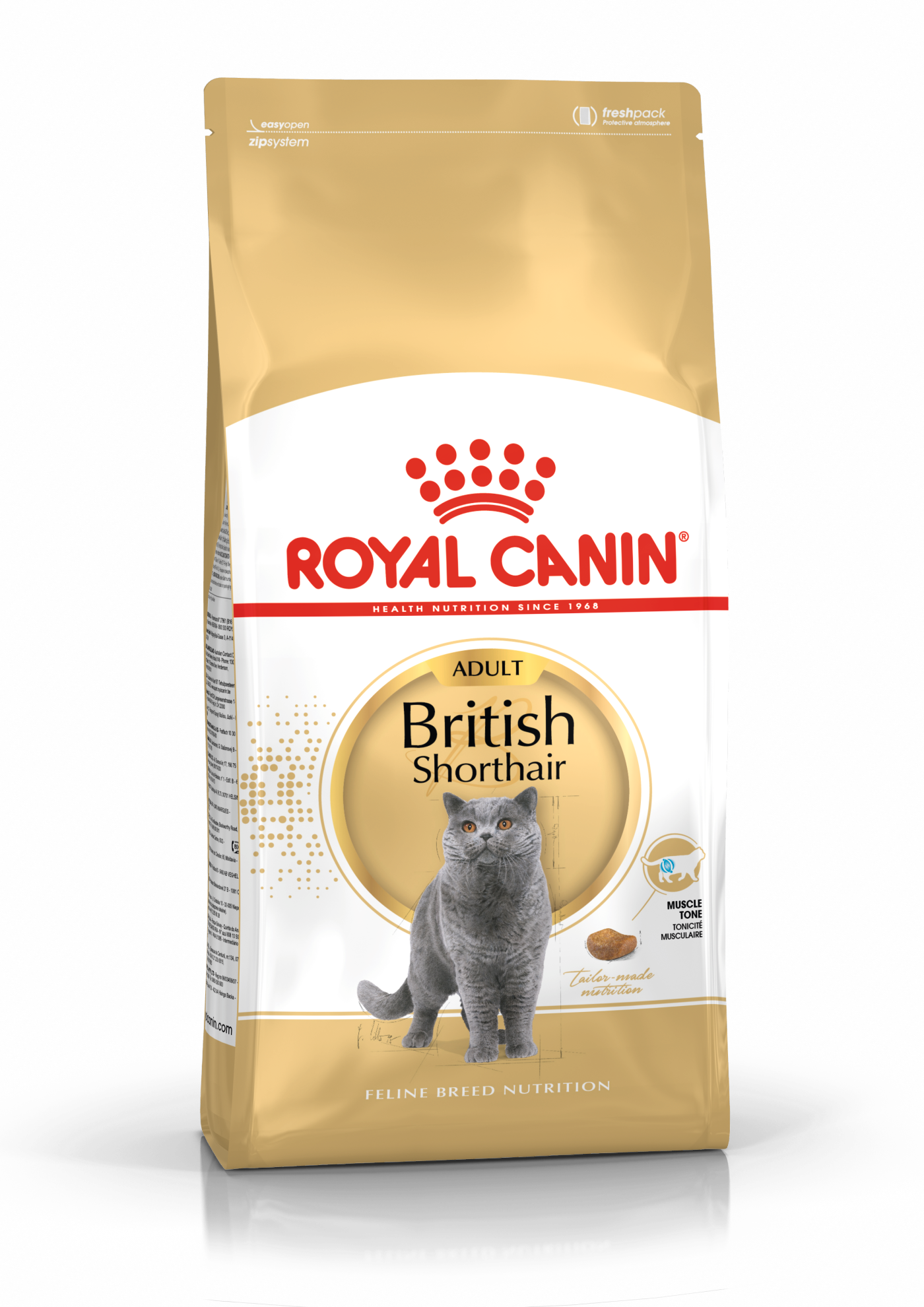
In addition to maintaining a healthy urinary function as for all cats, the main nutritional goals for adult British Shorthairs are:
Caring for their massive body by contributing to maintaining an ideal muscle mass and supporting their joint health.
Helping to preserve the health of their skin and the beauty of their incredibly thick, short coat, with the enriched addition of targeted nutrients.
Supporting good oral hygiene with an adjusted size and shape of kibble that’s easy for them to grab with a texture that induces chewing. Indeed, the British Shorthair has a tendency to gulp their food down without chewing it. They are therefore prone to dental disease, such as gingivitis.
Supporting cardiac health with optimal levels of nutrients, such as taurine, L-carnitine, EPA-DHA and antioxidants. The British Shorthair can suffer from the hereditary disease hypertrophic cardiomyopathy, or a thickening of the walls of the heart. The condition can be easily identified by an echocardiogram test.
Between 4 and 12 weeks after birth
The natural immunity a kitten receives from the mother’s colostrum - or first milk - decreases while the kitten’s immune system gradually develops. This critical time, called the immunity gap, requires a complex of antioxidants, including vitamin E, to help support their natural defences. Kittens go through an intense and particularly delicate period of growth during which they’re prone to digestive upset. Their diet at this time should not only be rich in energy to meet their essential growth needs but should also contain highly digestible protein to cater to their digestive system that’s still maturing. Prebiotics, such as fructo-oligosaccharides, can also support their digestive health by helping to balance intestinal flora. The result? Good stool quality, all around. The kitten’s food should contain omega-3 fatty acids - EPA-DHA - which helps support the proper neuro-cerebral development.
Consolidation and Harmonisation: from 4 months to 12 months
From the fourth month, a kitten’s growth slows down. A food with an adjusted protein content and precisely balanced vitamins and minerals will help support the development of healthy muscles and bones for a healthy growth. The addition of L-carnitine, which is involved in healthy fat metabolism, can also be beneficial. The British Shorthair kitten’s energy requirement during this period remains high. A food lower in fats is recommended. This is particularly important after a cat is sterilised. Between 4 and 7 months, a kitten’s milk teeth fall out and are replaced by permanent ones. When the adult teeth have come through, a kitten needs to eat a specially designed moon-shaped kibble that’s big enough with a texture that makes it easy for the British Shorthair kitten to grasp. The unique kibble encourages chewing to help support oral hygiene. Until they’re 12 months old, a British Shorthair kitten’s immune system is still gradually developing. A complex of antioxidants, including vitamin E, can help support their natural defences during this time of big changes, discoveries, and new encounters. The digestive system matures progressively, with digestive aptitudes reaching full maturity toward twelve months of age. A cat is then able to consume adult food.
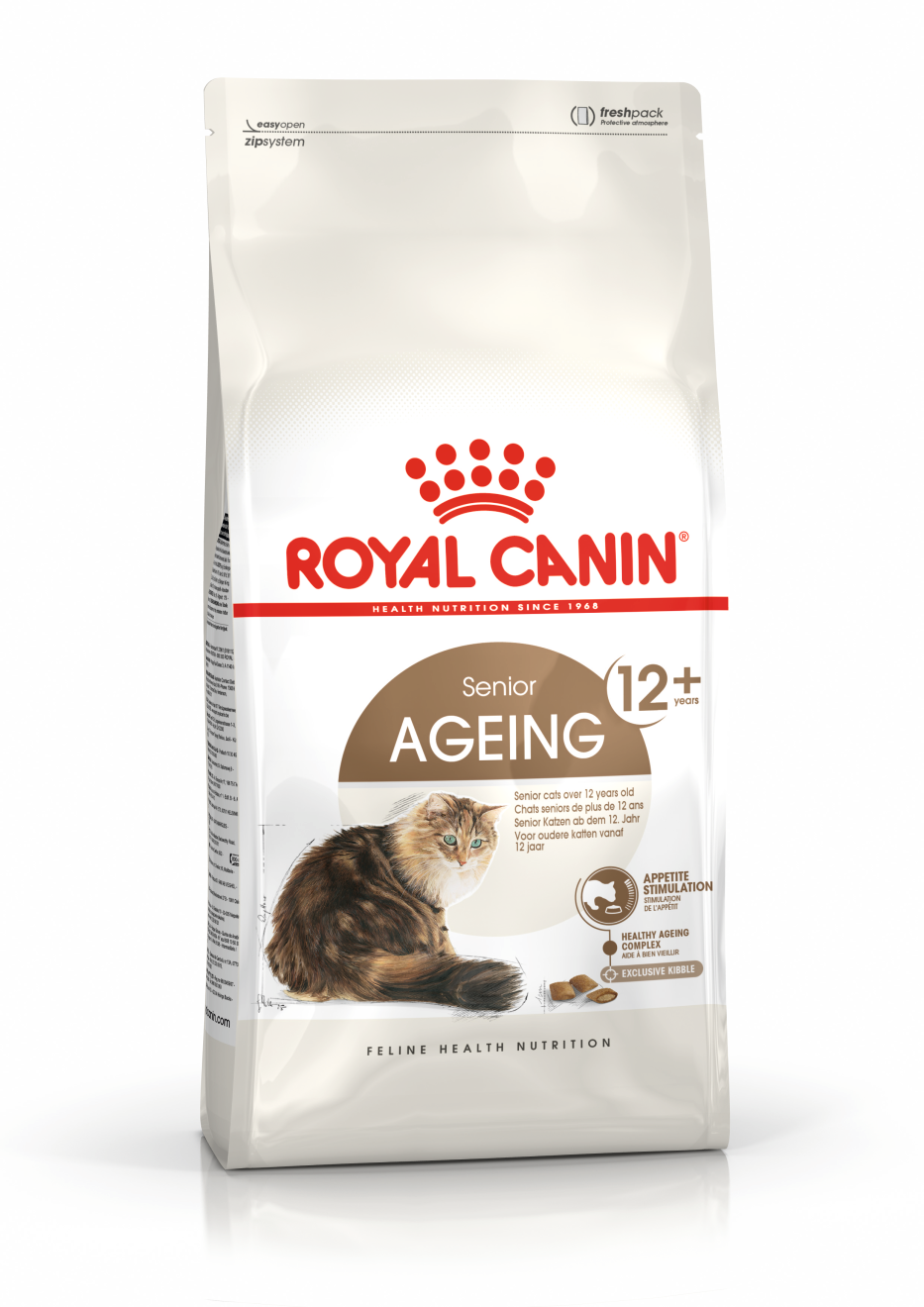
A senior cat – one over the age of 12 – may sometimes have difficulties with absorption. To maintain the weight of the ageing cat and minimise the risk of deficiency, they should be given an extremely digestible food filled with essential nutrients.
As they get older, cats increasingly suffer from teeth problems, and in some senior cats, the sense of taste and smell may decline as well, which can lead to a lowered intake of food. To ensure they continue to eat enough, the shape, size and hardness – meaning texture – of their kibble needs to be tailored to their now potentially more fragile jaw.
Note that the best energy level for any cat still depends on their lifestyle, even those who are ageing. A senior cat that continues to go out regularly will benefit from a diet with a slightly higher fat content. On the other hand, ageing does not protect an indoor cat from the risk of obesity. Their calorie intake should still be closely monitored. A food with a moderate fat content then may be optimal.
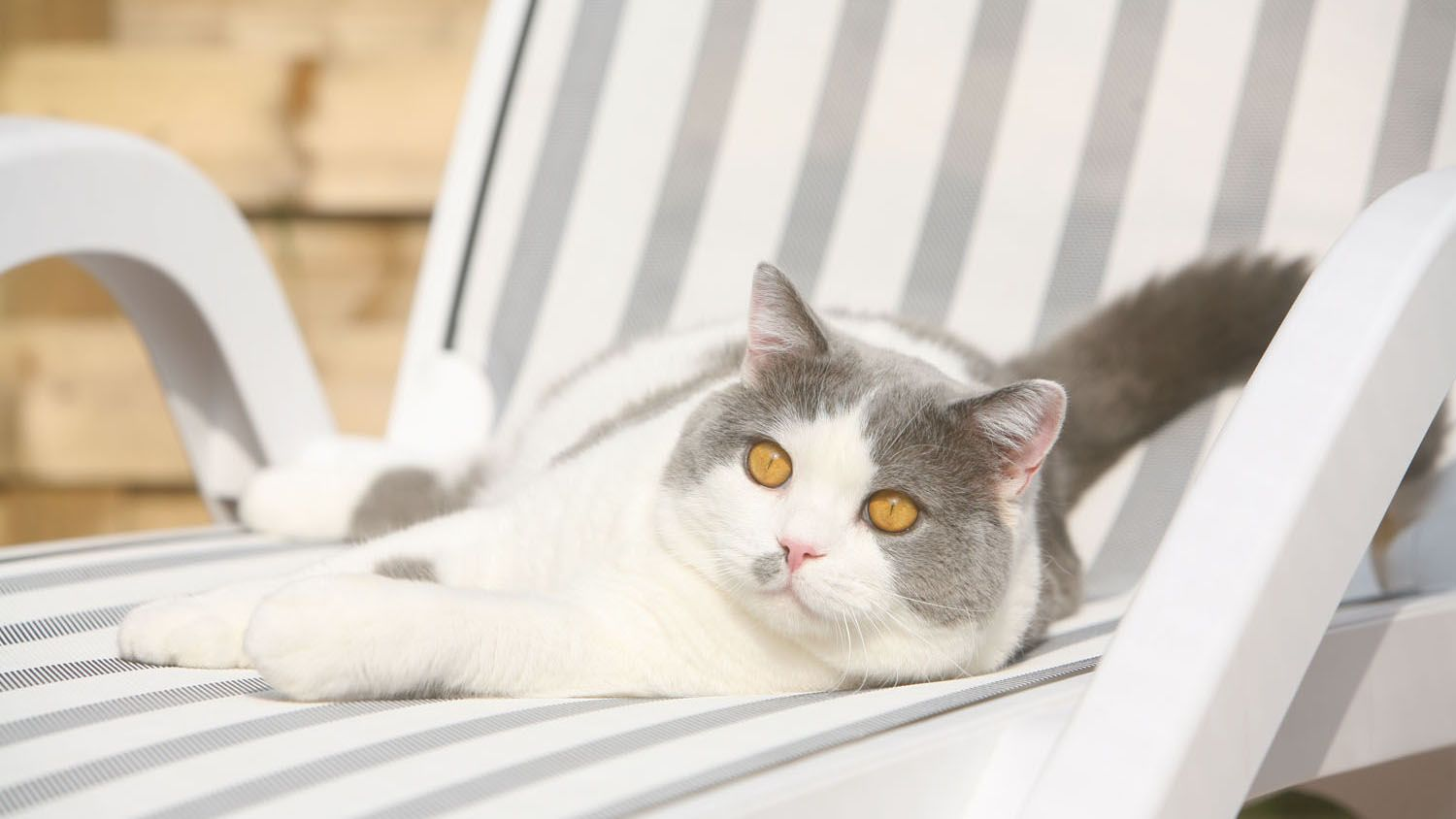
Caring for your British Shorthair
Grooming, training and exercise tips
Despite their laid-back manner, the British Shorthair personality is chock full of pluses, starting with their high intelligence and unflinching loyalty. Given these character traits, the breed is an easy one to train, and demonstrated to have insight into commands that make them amenable. Whenever they are in the mood.
Ah, that plush coat! A pleasure to look at and not so bad when it comes to upkeep either. Grooming the British Shorthair is a fairly effortless task. The dense, soft hair needs little brushing - weekly at best - with more done at seasonal shedding times in the spring and fall to keep it in top condition. Their extremely soft coat exists in one layer, as they do not sport a double coat.
British Shorthairs have a muscular but not athletic body; call them more bruiser than bodybuilder. Still, they should have outdoor time like all breeds to get in a daily dose of exercise. Keep them in your sights when they’re in the garden however to prevent any attacks by predators, including nearby dogs with a prey drive. Playtime indoors works just as well to keep this – or any cat – fit.
Despite their laid-back manner, the British Shorthair personality is chock full of pluses, starting with their high intelligence and unflinching loyalty. Given these character traits, the breed is an easy one to train, and demonstrated to have insight into commands that make them amenable. Whenever they are in the mood.
Ah, that plush coat! A pleasure to look at and not so bad when it comes to upkeep either. Grooming the British Shorthair is a fairly effortless task. The dense, soft hair needs little brushing - weekly at best - with more done at seasonal shedding times in the spring and fall to keep it in top condition. Their extremely soft coat exists in one layer, as they do not sport a double coat.
British Shorthairs have a muscular but not athletic body; call them more bruiser than bodybuilder. Still, they should have outdoor time like all breeds to get in a daily dose of exercise. Keep them in your sights when they’re in the garden however to prevent any attacks by predators, including nearby dogs with a prey drive. Playtime indoors works just as well to keep this – or any cat – fit.
All about British Shorthairs
Read more on this topic
Sources
- Veterinary Centers of America https://vcahospitals.com/
- Royal Canin Cat Encyclopedia. Ed 2010 and 2020
- Banfield Pet Hospital https://www.banfield.com/
- Royal Canin BHN Product Book
Like & share this page